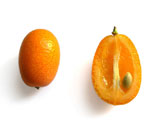Febrile Convulsion- The Royal Children’s Hospital, Melbourne
Posted by: admin on: July 8, 2011
- A simple febrile convulsion is a brief (< 10 min duration) generalized convulsion in a febrile (> 38oC) child aged between 6 months and 6 years, with no previous afebrile seizures, no progressive neurological condition and no signs of a CNS infection.
- Management of the convulsion
This is described in detail in the Convulsions guidelines.
- After the convulsion
- The risk of bacterial meningitis in a child who has a fever and a convulsion lasting less than 10 minutes is between 0.5 and 2%.
- The risk is higher for those with prolonged convulsions, rising to 17% for convulsions in excess of 30 minutes.
- A septic workup INCLUDING an LP is strongly recommended in all children less than 6 months of age, and in those: older children with longer seizures; or any clinical signs suggestive of meningitis.
- If discharging a patient home following a febrile convulsion, it is important to give the family advice regarding fever control and what to do in the event of a future convulsion.
- Verbal advice should be reinforced with written advice (give Parent Information Sheet (Print version – PDF).
- Follow-up during the next 24 hours is advisable to assess the progress of the child’s illness and to allow parents the opportunity for further discussion.
Fever control
- Clothing should be minimal – nappy alone or light outer layer depending on ambient temperature.
- Tepid sponging, baths and fans are ineffective in lowering core temperature, and are not recommended.
- Paracetamol has not been shown to reduce the risk of further febrile convulsions. It may be used for pain / discomfort associated with febrile illnesses such as otitis media. The parents should understand the reasons for its use and be discouraged from using it solely to reduce their child’s fever.
Notes
- Febrile convulsions are common, and occur in 3% of healthy children between the ages of 6 months and 6 years. They are usually associated with a simple viral infection.
- The onset of the convulsion may be sudden with little evidence of preceding illness. The convulsion may be terrifying for the parents to observe they frequently believe that their child is dying and may attempt CPR or other resuscitative measures.
- Febrile convulsions are benign, with minimal morbidity and essentially no mortality.
- Repeated convulsions during same illness occur in about 10 – 15% of children. These children should be reassessed in hospital. There are usually no serious implications; however a period of observation may be required to clarify the progress of the illness.
Long term issues
- Recurrence rate depends on the age of the child the younger the child at the time of the initial convulsion, the greater the risk a further febrile convulsion (1 year old 50%; 2 years old 30%).
- Risk of future afebrile convulsions (epilepsy) is increased by family history of epilepsy, any neurodevelopmental problem, atypical febrile convulsions (prolonged or focal).
- No risk factors: risk of subsequent epilepsy approx. 1% (similar to population risk).
- 1 risk factor: 2%. More than 1 risk factor: 10%.
- Children who have recurrent prolonged convulsions (which are rare) may benefit from having a rectal diazepam kit available at home, which their parents can administer if a convulsion does not cease spontaneously within 10 minutes.
- Long term anticonvulsants are not indicated except in rare situations with frequent recurrences.
- It may be appropriate to offer a review appointment with a general paediatrician
Read more at http://www.rch.org.au/clinicalguide/cpg.cfm?doc_id=5132
Search
- drchasrani: Difficult to get such a data, authenticated at that. Try Times of India online library
- rakesh pore: hi, where can i get genuine information about "10 most common drugs sold in india?" i want it for a local project
- nilesh dutta: sir, Plz give detail about MBA Sports Management Thanks and Regards


Leave a Reply